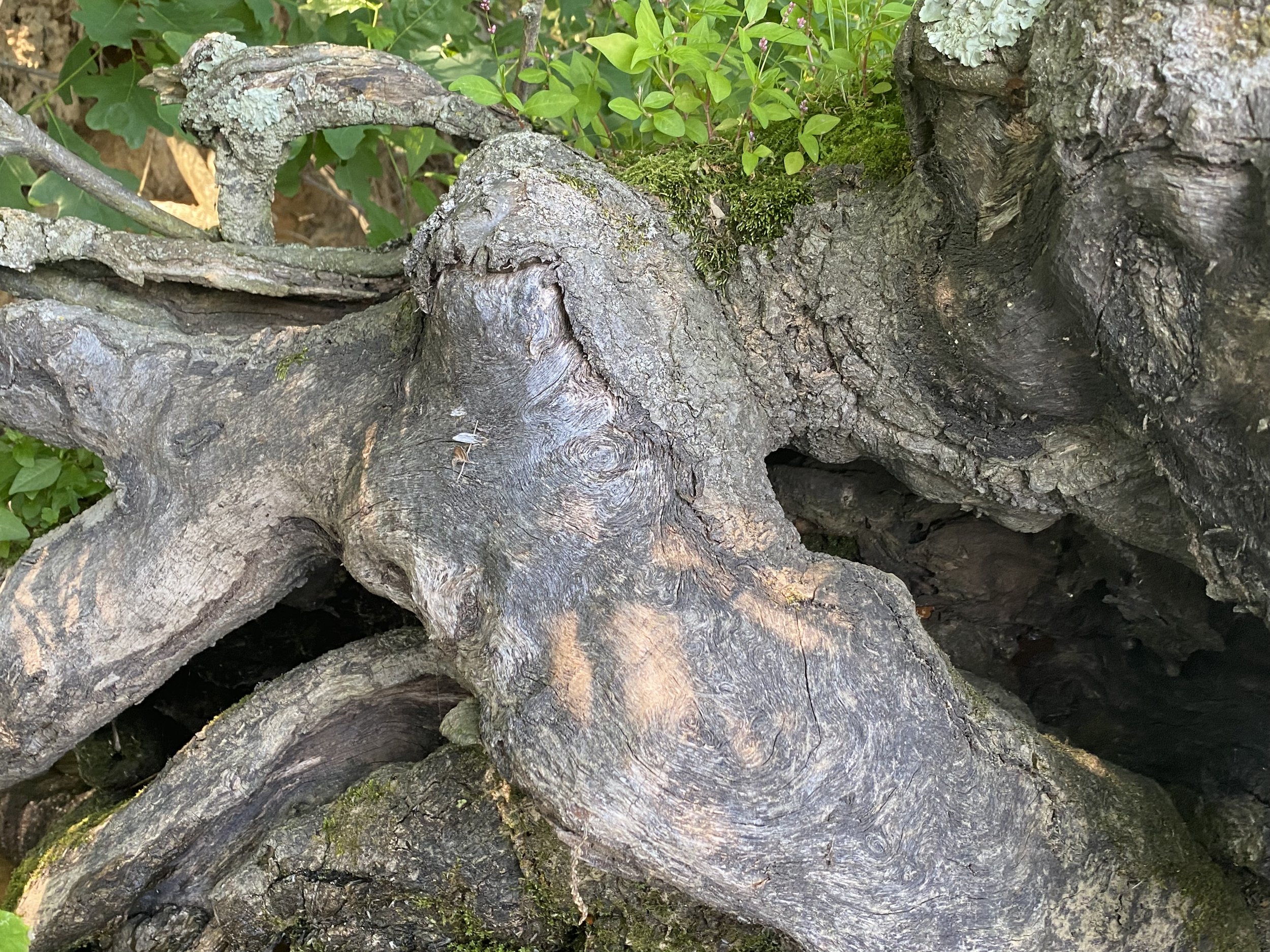catachresis
playing in the edges of paradox, blur, and being wrong
I write from the tangible chimera of edges.
Daydream of stone on riverbank.
Numbed tingle of awakening toes.
Ordinary ocean spirals echoing whale song.
Empty page, not wanting and not not-wanting, the emergence of essay.
My reverence for the essay—as form, as being—is whole and deep. I am grateful for what it knows and what it says: to try is enough, is only, is all there is. Oh, this form who allows the unforming of itself to be what it holds. Composition from decomposition. A forever unformed form.
Catachresis: wrong use of a word for the context; forced; especially paradoxical.
A word to catalogue perversions and note what colors itself outside the lines. Perhaps.
If you care to pronounce the word as the dictionaries say, it’s /cat/ /a/ /cree/ /sis/. Truth be told, I pronounced it /ca/ /tach/ /re/ /sis/ for many years before finally looking it up. I remember the moment exactly, how I laughed at myself for how wrong I was at pronouncing the name of this word who has such strict rules about what’s (im)proper.
And in that moment, catachresis and I became friends. She laughed at me, too. Our tricksters smiled at each other in the mirror. I saw her, beyond her constraints. I’ve known her for quite some time now. She’s a shifter. (See how she plays?) She appears for me as a winged goddess of translucent onyx (yes, this is possible) who swoops circles inside caverns of paradox.
You can call for her. Find an anomaly. Disrupt a cliché. Question information spoken without the prefix of “mis-.” See the echo of your own irony. Stand in the antithesis of what you say. She’ll come to play.
Even words long to be free.
The places most strict and controlled in their binding have the most cracks.
And the points where two (or more) strictly bound places meet—this is where aliveness plays.
It’s always only ever about the Venn Diagram.
The overlapping space. A portal for the constricted aliveness to unleash itself—its tendrils stretching roots to remember the breath of water and stars.
Mixed metaphor is catachresis, too. Do you hear her?
Folly. Hysteria. Distraction. Delusion of scientific daydream. Absurd is familiar. The (un)real unreels.
Do you dare let her name land upon your tongue?
Hesitation doesn’t change the time. Neither does eager. Silence is loud. Obsessive is mild. Broken is the blue light special. Up has always been down.
How wrong are you willing to let yourself be?
Home is remembering. There are no sides to take. What you think is here is already gone. Step into the blur.
Convention is mirage. Conspiracy is prophesy. Phobia is an alarm clock. The opposite is also true. Poems are scriptures of sky.
News is politics is democracy is pharmacy is military is story is box bound tight… do you see the cracks?
She screams from the caverns:
Let the contradictions loose… they are riddles for us to play.
Bring what’s separate, defined, and fixed to the edge. Let it fall. Even the dictionary. Even the sun. Even your most precious stone. Listen to the soil. The worms know how.
Beetles hold the sky. Under is above. Edges are always only flimsy. The whole elephant is a fragment. We all are blind, stuck in the spin of tight stories seen with fractured eyes.
Cat a… cre… creee…. creeee… sis…
She calls for us. Into our toes. From inside our bones. Through our waters.
She crees: Let the breaking. Become the edge itself. Fall into the enigma of what you hold.
You, too, are catachresis.
Your wings span a prayer of unrestrained joy.
Your body is moonlight, your toes drip dandelions, your voice is mountain and cloud and seed.
Do you hear your call?
*
As dissolving delight, Melissa
They could not tame me,
so they would not keep me,
alas,
and how that feels,
the weight of it,
I will not tell
any of you,
not ever.
-Mary Oliver (from “The Beautiful, Striped Sparrow,” Thirst, 2006)
Ah, not to be cut off,
not through the slightest partition
shut out from the law of the stars.
The inner—what is it?
if not intensified sky,
hurled through with birds and deep
with the winds of homecoming.
-Rainer Maria Rilke (Ahead of All Parting: The Selected Poetry and Prose of Rainer Maria Rilke, 1995)
Going barefoot is the best way to know a bog. Your feet will tell you things your eyes cannot. At first, the pillow-soft surface of the bog seems homogeneous, but as you walk through it, its complex pattern becomes apparent.
-Robin Wall Kimmerer (Gathering Moss: A Natural and Cultural History of Mosses, 2003, p. 116)






